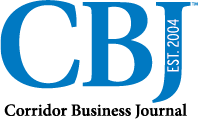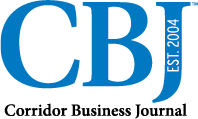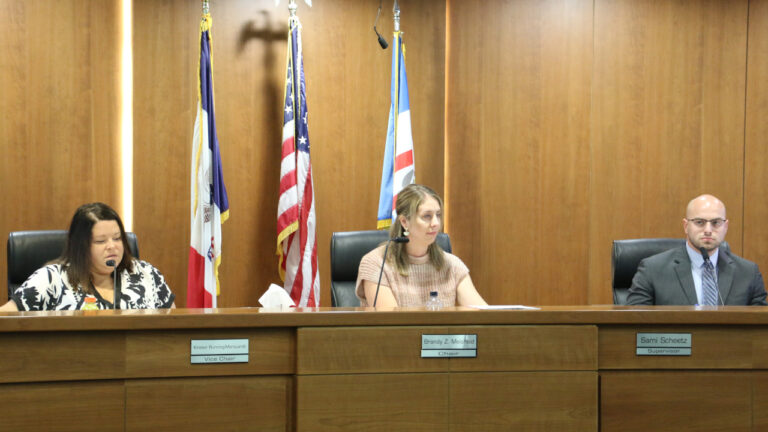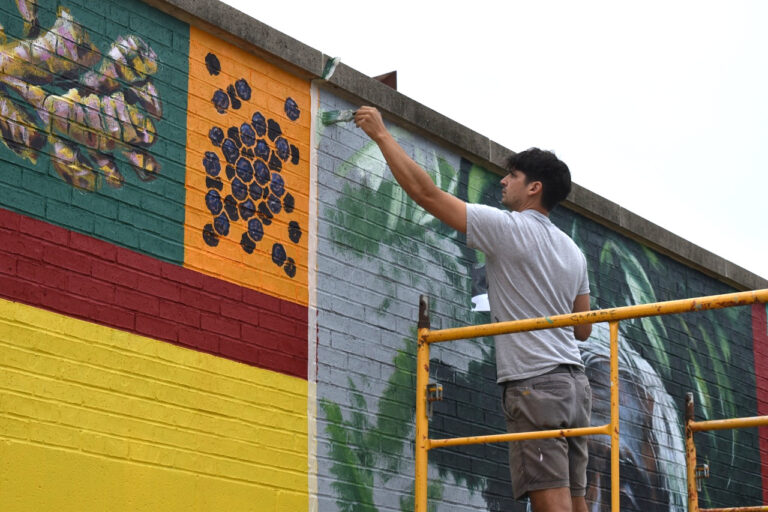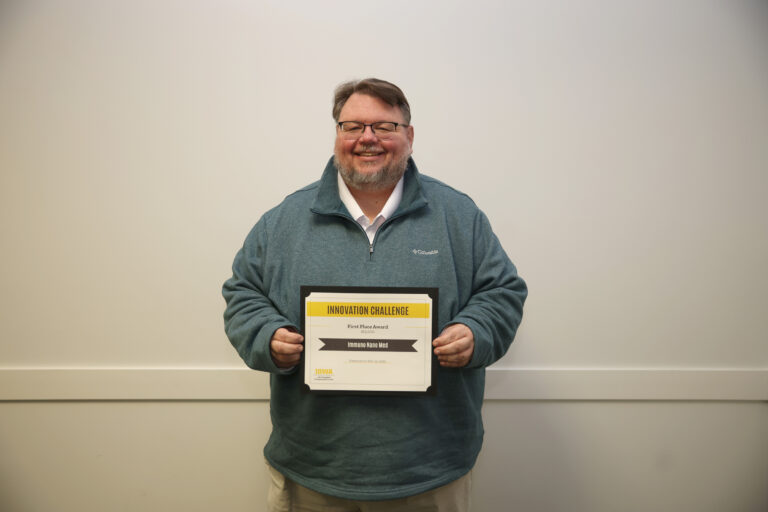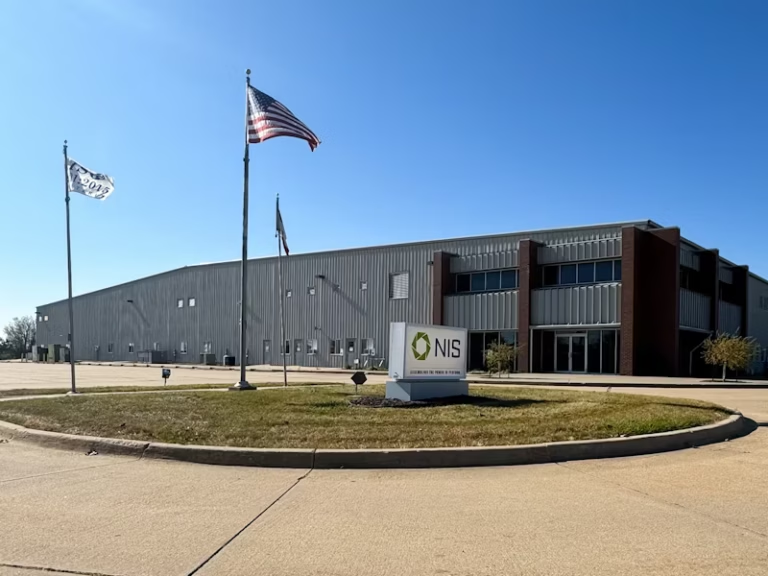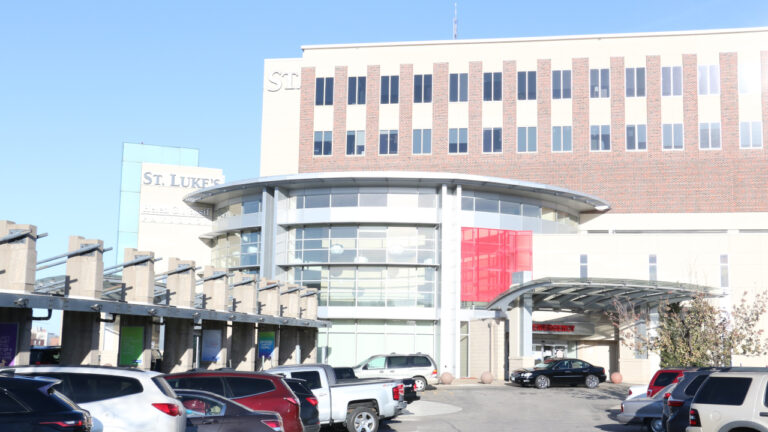
Audrey Wiedemeier is the executive director of the Iowa City Bike Library, a grassroots nonprofit dedicated to making bicycling accessible, sustainable and fun for everyone in the Iowa City and Cedar Rapids Corridor.
Audrey shares the story of how she discovered the Bike Library as a University of Iowa student, her path from volunteer to leader, and the organization’s mission to empower community members through bikes. She offers insight into the Bike Library’s youth and senior programs, its creative approach to fundraising and the importance of building a more bike-friendly community through advocacy and infrastructure. Audrey also discusses the impact of volunteers, the challenges and rewards of running a nonprofit, and her vision for the future of cycling in the region.
I learned a lot and I think you will too.
Sponsored by MidWestOne Bank, this is the latest edition of the CBJ’s Real Success with Nate Kaeding and notable Iowa business and cultural leaders.
Real Success with Nate Kaeding was named Best Business Podcast at the 2024 Iowa Podcast Awards.
Nate Kaeding: We’re here in Iowa City, the leaves are changing, and it’s perfect bicycle weather. Bicycles are becoming a bigger part of the Corridor region. Tell us about the Iowa City Bike Library and your own journey to it.
Audrey Wiedemeier: Thanks, Nate. It really is a beautiful time of year to be on a bike. Bicycles are a great equalizer, and that’s what I love about them. I found the Bike Library when I was a student at the University of Iowa. I had my bike stolen a few times, and finally bought a new one from Jeff’s Bike and Ski, but couldn’t afford to get it tuned up. That’s when I started going to the Bike Library to learn how to fix my own bike. I hadn’t grown up using tools or working in a shop, so it was new to me. My mom was the handy one in our family, but she was busy raising four kids. I found I really liked learning how things worked and fixing my own stuff. Eventually, I became a volunteer, then an AmeriCorps volunteer, and ran the shop for a year in 2012.
What drew you to AmeriCorps and the nonprofit sector, rather than the private sector?
Audrey: My first job out of college was with the Iowa Bike Coalition, a statewide nonprofit focused on bicycle advocacy. I loved working with my hands and meeting all the different people who came through the Bike Library. I realized I wanted to do more of that, so I took a step back from the traditional job path and leaned into the Bike Library. I found that I was more passionate about community engagement and making a difference at the grassroots level than I was about climbing a corporate ladder. It’s not always the easiest path, but it’s incredibly rewarding.
For those who aren’t familiar, what exactly is the Bike Library? Is it just what it sounds like?
Audrey: The Bike Library is a community hub for all things bicycles. You can donate a bike, get a bike, fix a bike, ride a bike, or just be part of a community enthusiastic about biking. There are so many genres: commuting, recreation, mountain biking, gravel riding, trail riding. We try to provide an entry point for people wherever they are in their bicycling journey. We’re kind of like the gateway drug. If you haven’t biked in a while, are new to biking, or face financial barriers, we’ll meet you where you’re at. Eventually, if you get hooked, you might go out and buy a new bike, like I did. There are five other community bike shops in Iowa and over 220 across the United States, but each is unique to its community.
What we do is really tailored to the people we serve. Some people come in to borrow a bike for a season, others want to learn how to fix their own, and some just want to be part of a welcoming community. We have programs for kids, teens, adults, and now even seniors and people with disabilities. It’s about so much more than just bikes — it’s about empowerment, education and connection.
Looking at your website, you’ve checked out almost 1,800 bikes, logged 27,000 volunteer hours, and recycled tons of scrap metal and rubber. What key metrics or goals do you use to measure success?
Audrey: For me, success is being able to provide people what they’re looking for when they come to our shop. When I started as director seven years ago, I was the only staff person and we had to turn people away often due to capacity. Now, we can meet people where they are — whether they need to fix their bike, use a public bench, or learn to use tools for the first time. We don’t service bikes for people, but we teach them how, which translates to more confident riders. We also track bikes donated (over 2,000 each year), bikes upcycled and checked out, and participation in our 15 different programs, like our Teen Earn-a-Bike program, where teens fix up a bike and take it home.
Of course, we look at return on investment and other metrics, but the most important thing is the impact we have on individuals. If someone comes in and leaves feeling more empowered, more connected, or more confident, that’s a win. We also value the community aspect. 27,000 volunteer hours is a testament to how many people care about what we do.
Is there a story that stands out to you that illustrates the impact of the Bike Library?
Audrey: A senior at City High came to the Bike Library as a sophomore after emigrating from Togo. His teacher brought him in for our Teen Earn-a-Bike program. He has since developed mechanical skills, confidence and athleticism. He volunteers at our Mujeres en Bicicleta program for Latina moms by leading rides and helping others. His teachers say he opened up more in class after being with us. The Bike Library really is like a family. If you hang out long enough, we’ll fold you in.
Youth seems to be a big part of your mission. How have you built relationships with local schools?
Audrey: We have relationships with teachers at several schools. For example, Kevin Johnson, the new PE teacher at Tate High School, reached out and we piloted a bike riding course with his students. It’s always been a dream to be in the Iowa City Community School District, so each kid gets the same access to bike safety and education. With our new youth bike coordinator, we now have the capacity to expand these programs.
We want every kid to have the same opportunities: Access to bikes, safety education, and the confidence to ride. We take a very individualized approach by asking students where they live, work and go to school, and then showing them the safest routes. We actually take them out on the streets so they can experience real-world riding.
All these programs and staff require funding. You’re in the fourth quarter of a million-dollar fundraising campaign. What’s your approach to nonprofit fundraising?
Audrey: I actually enjoy fundraising now. I have an incredible team and we make it fun. The Bike Library is easy to raise money for, because we have a good time doing what we do. We try to be creative and resourceful. For example, we partnered with Public Space One to hand-print all of our invitations to our “fundraisers,” so people felt personally invited. Building genuine connections is key. Do your research, align your ask with the donor’s values, and don’t be afraid to ask for what you need.
We also try to stand out by doing things differently. When we launched our capital campaign, we knew other nonprofits would be fundraising at the same time, so we focused on the little details that make people feel special and connected. It’s all about relationships, creativity and persistence.
What’s your advice for making
the “ask” in fundraising?
Audrey: Build genuine connections beforehand and do your research. Find ways to align your mission with the donor’s values. When it comes to capital campaigns, go for the biggest ask first, because they build credibility. We didn’t go public with our campaign until we had raised 80% of our goal, including two $100,000 gifts from the city and a family foundation. Those relationships were built over years, not overnight.
When you’re sitting across the table from someone, be honest, be passionate, and don’t undervalue your ask. People want to support things that matter to them, so show them how your mission aligns with their values. Finally, don’t be afraid to ask for what you really need. If you ask for too little, you might miss out on the support they’re willing to give.
Looking ahead, what’s your vision for the Bike Library in five years?
Audrey: I’m somewhere in the middle between big-picture planning and focusing on immediate impact. Once we finish the capital campaign, we’ll do more strategic planning. I’d love to buy the building next door, which is city-owned, and expand, especially to support e-bikes and e-cargo bikes for families. One indicator of a successful biking community is when moms feel safe biking with their kids. If we can cater to that and subsidize e-cargo bikes for families, that’s a big win.
You’re also involved in advocacy and research. What are the next steps to make Iowa City and Cedar Rapids better biking communities?
Audrey: Infrastructure is always a big topic. I’m not an urban planner, but I work at the grassroots level. I think we should ask residents: How would you design your ideal neighborhood? It shouldn’t just come from the top down. Connecting neighborhoods and not centering everything around cars is key. Many families are buying cargo bikes instead of a second car. Two big infrastructure needs are a pedestrian/bike-friendly bridge on Highway 1 and an underpass on Sycamore Road to connect the south side to Sycamore Mall.
Another big challenge is the Burlington Street Bridge. It’s really tough for cyclists to cross unless you’re very confident. We need to create better buffers between bikes, pedestrians and cars, so everyone feels safe. Reducing congestion and improving infrastructure benefits everyone, not just cyclists.
We’re also working with the University of Iowa’s College of Public Health on a NIH-funded study about youth bike safety curriculum, which is showing promising results in increasing safe biking behaviors among kids.
What are some of the key
findings from that research?
Audrey: Kids in the intervention group were three times more likely to make complete stops at stop signs or lights, 13 times more likely to use hand signals, and 70% less likely to ride against traffic. Helmet use was high, but we saw improvements in proper helmet positioning, including making sure helmets cover the frontal lobe, not just the back of the head. We also saw a decrease in sidewalk riding, which is actually safer since cars aren’t looking for bikes on sidewalks when exiting driveways.
The research is unique because it included a control group, which is rare in youth bike safety studies. We’re excited to share these findings and use them to improve our programs and advocate for better safety education.
What’s your dream bike route in
the Iowa City/Cedar Rapids area?
Audrey: My lead mechanic, Drew Boss, recently led an amazing urban off-road route behind the Sycamore Greenway, through wetlands and off-road trails I didn’t know existed. Waterworks Prairie Park has great trails, and Woodpecker Trails are perfect for mountain biking. I love that you can do all this within city limits and still stop for snacks at places like Dane’s Dairy, Heyn’s Ice Cream, or Dairy Queen. Iowa isn’t always seen as a vacation destination, but people are always surprised by how special Iowa City is, especially for biking.
If I had half a day, I’d hit some off-road trails, maybe go out to Sugar Bottom, and then swing by for some ice cream. It’s the perfect mix of adventure and community.
Are there other towns you look
to as models for biking communities?
Audrey: Davis, California, is always mentioned, though their climate is milder. Boise, Idaho, is a bit bigger but has winters and great biking infrastructure. I think we Iowans are gritty and can lean into that. To reach the next level, we need to incentivize biking, perhaps by reducing parking availability or increasing costs, and by creating better buffers between bikes, pedestrians and cars.
We’re getting there, but we need to keep chipping away. It’s about building critical mass through making biking the easy, obvious choice for more people, especially students and families. The more people you see on bikes, the safer and more welcoming it feels for everyone.
What about serving populations beyond youth and typical cyclists?
Audrey: We recently started a program called Cycling Without Age, which originated in Copenhagen. It’s a bike rickshaw program for seniors and people with disabilities. We can pick up seniors from their homes or living facilities and take them out for rides so they can feel the wind in their hair again. Michelle Voss, a brain researcher at the university, helped found our chapter. The program is about improving cognitive health, connecting generations and giving people the joy of being outside.
We’ve partnered with the Ashton House, which is a government facility in City Park, and we’ll be able to take people out on the trails right from there. It’s a beautiful way to reach people who might not otherwise have access to biking or the outdoors.
How can people in the community get involved with the Bike Library?
Audrey: Our team includes five staff and over 200 volunteers, with about 50 active every week year-round. Donating a bike you don’t use, volunteering, or even just stopping by the shop are great ways to get involved. There’s always a need for more volunteers, and we have a board of 13, a steering committee of 10 (who’ve led our capital campaign), and a leadership council of 40 who serve as ambassadors. Expanding our network is as important as raising funds.
For example, Joe Nelson of Team Iowa Physical Therapy is on our leadership council. He got his bike at the Bike Library while in physical therapy school and now gives back to help others access the same opportunities. People like Joe don’t use our services every day, but they understand the value of what we do and help spread the word.
When you volunteer, you find your niche. Some people use their professional skills, others want to do something completely different from their day job. There’s room for everyone, and you become part of the Bike Library family
